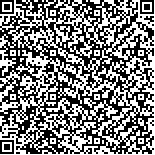本文已被:浏览 768次 下载 552次
Received:June 30, 2022 Published Online:March 20, 2023
Received:June 30, 2022 Published Online:March 20, 2023
中文摘要: 肿瘤微环境是由肿瘤细胞和与其相互作用的间质组织构成,其与肿瘤细胞之间是一个双向的、动态的、错综复杂的网络,其中的间质组织包括浸润的免疫细胞、各种细胞因子、趋化因子及血管系统等。肿瘤的不规则生长动力学导致耗氧量增加,进而导致肿瘤微环境缺氧条件,肿瘤微环境中的缺氧与低氧诱导因子(HIF-1)通过诱导免疫抑制细胞的产生,抑制有着正常效应的免疫细胞或激活免疫检查点[程序性死亡受体-1(PD-1)、程序性死亡配体-1(PD-L1)、细胞毒性T淋巴细胞相关抗原-4(CTLA-4)〖KG-*5〗]等免疫因素来抑制先天性或固有免疫,进而参与肿瘤微环境中肿瘤转移和免疫逃避的各个方面。本文对低氧与HIF-1在肿瘤免疫逃避中的作用,及如何调节肿瘤免疫中的低氧与HIF-1进而改善免疫治疗的研究进展作一综述与讨论。
Abstract:Tumor microenvironment (TME) is composed of tumor cells and interstitial cells that interact with tumor cells.It is a bidirectional, dynamic and complex network between TME and tumor cells.In the interstitial tissue,there are infiltrating immune cells, various cytokines, chemokines, vascular system and so on.The irregular growth kinetics of tumor growing leads to the increased oxygen consumption, in turn, hypoxic conditions inTME.By inducing the production of immunosuppressive cells and inhibiting immune cells with normal effects or activating immune checkpoints [programmed death receptor-1 (PD-1), programmed death ligand-1 (PD-L1), cytotoxic T lymphocyte associated antigen-4 (CTLA-4)] and other immune factors, hypoxia and hypoxia inducible factor (HIF-1) in TME can inhibit innate and adaptive immunity and then participate in all aspects of tumor metastasis and immune escape.This article reviews and discusses the role of hypoxia and HIF-1 in tumor immune escape and its regulation in tumor immunity to improve immunotherapy.
keywords: Tumor microenvironment Hypoxia Hypoxia inducible factor Immune checkpoint Immune escape Immune surveillance Oncolytic virus Drug resistance
文章编号: 中图分类号:R730 文献标志码:A
基金项目:
| Author Name | Affiliation |
| ZHAO Xin-fei, LI Yu-feng, TIAN Yue, XIAO Xin-yao, SHEN Hua | Department of Oncology, Affiliated Sir Run Run Hospital of Nanjing Medical University, Nanjing, Jiangsu 211166, China |
| Author Name | Affiliation |
| ZHAO Xin-fei, LI Yu-feng, TIAN Yue, XIAO Xin-yao, SHEN Hua | Department of Oncology, Affiliated Sir Run Run Hospital of Nanjing Medical University, Nanjing, Jiangsu 211166, China |
引用文本:
